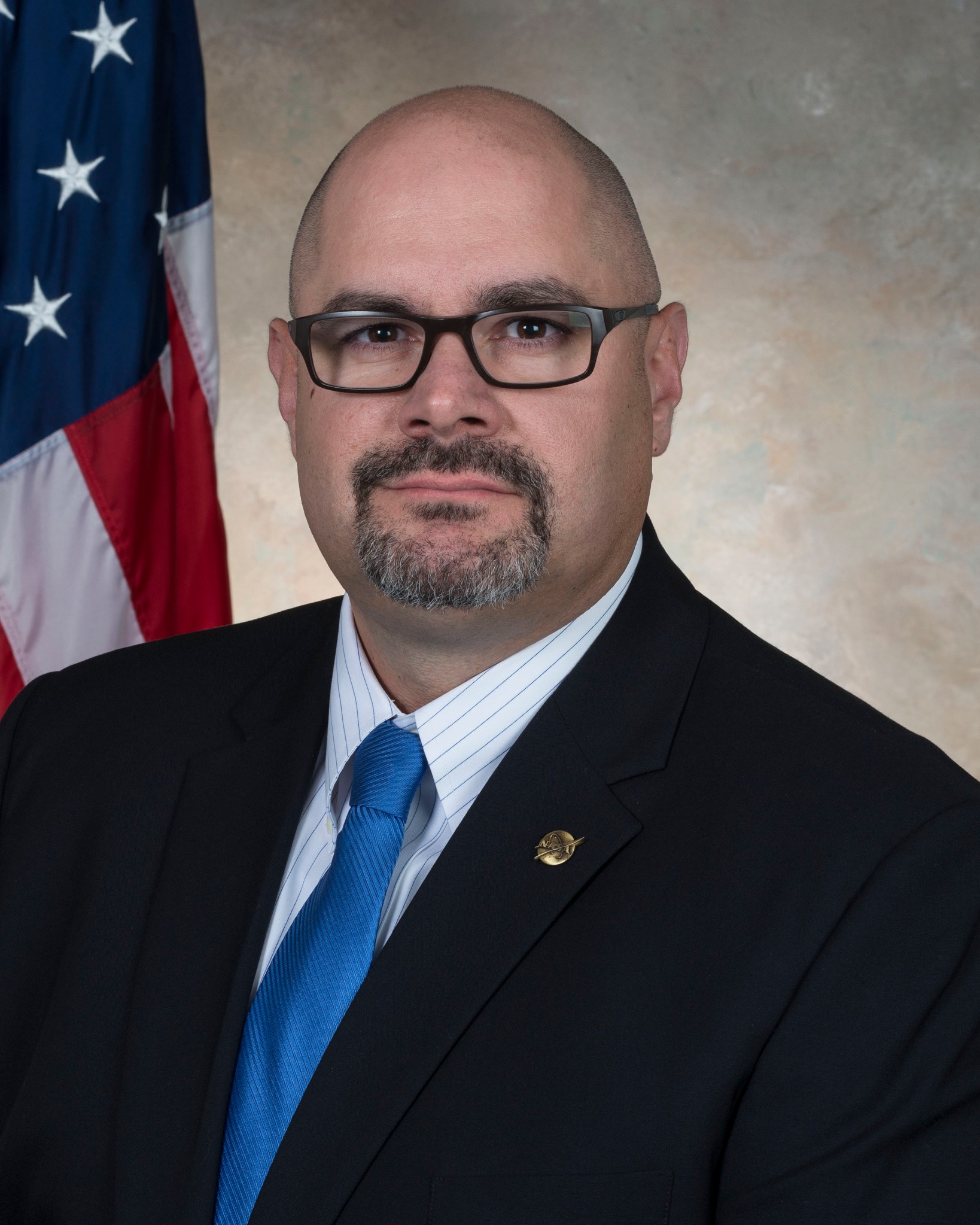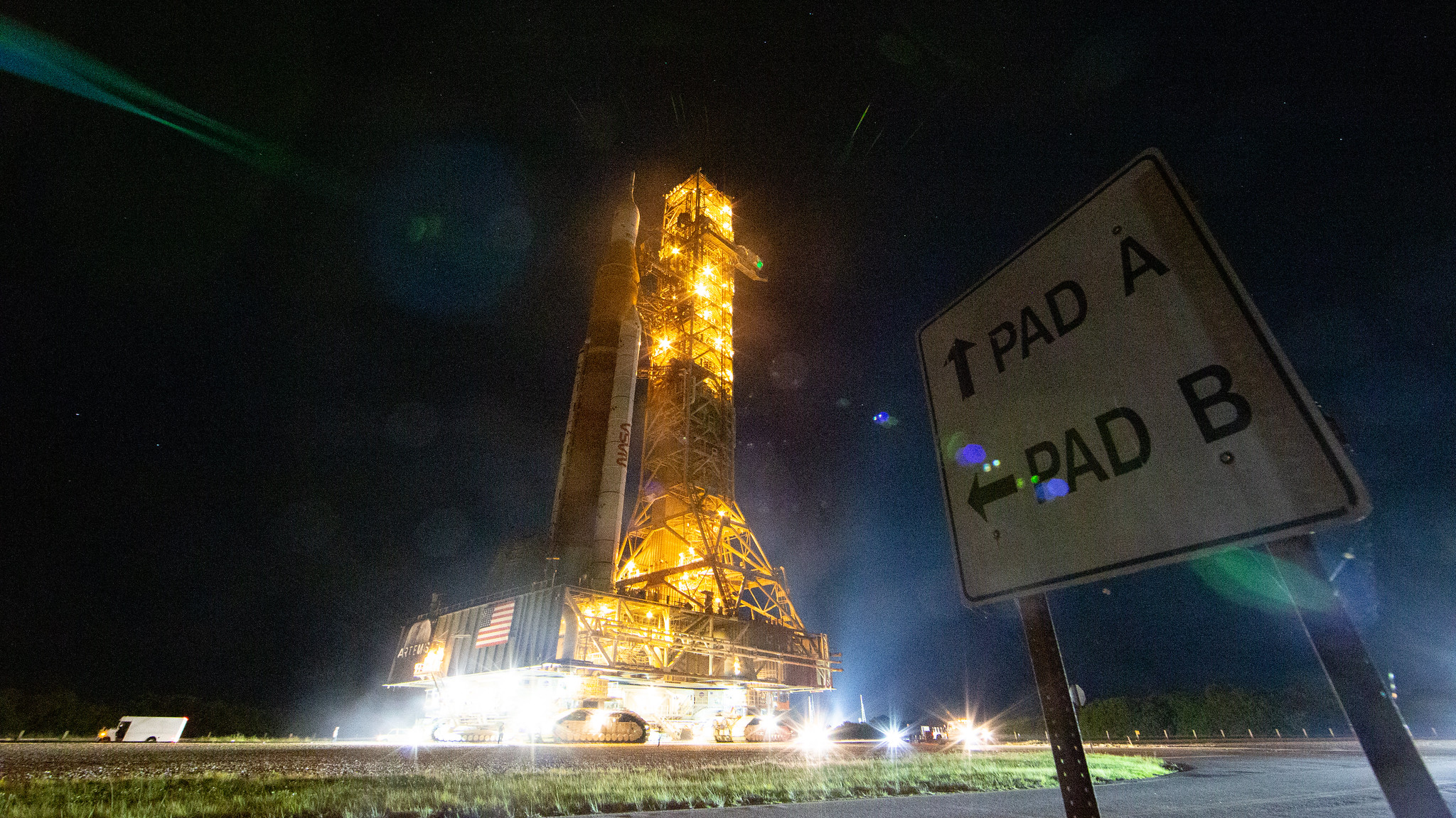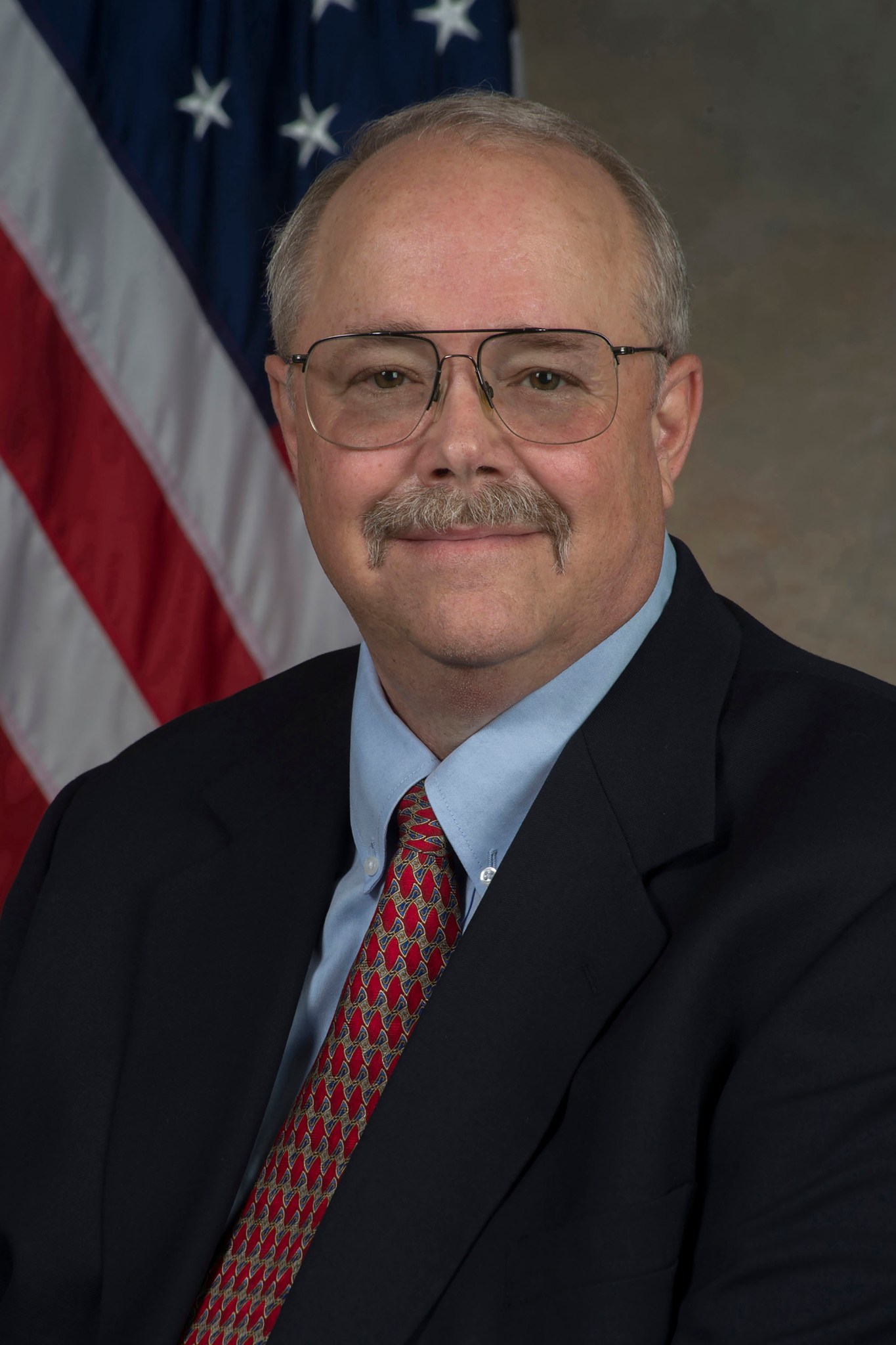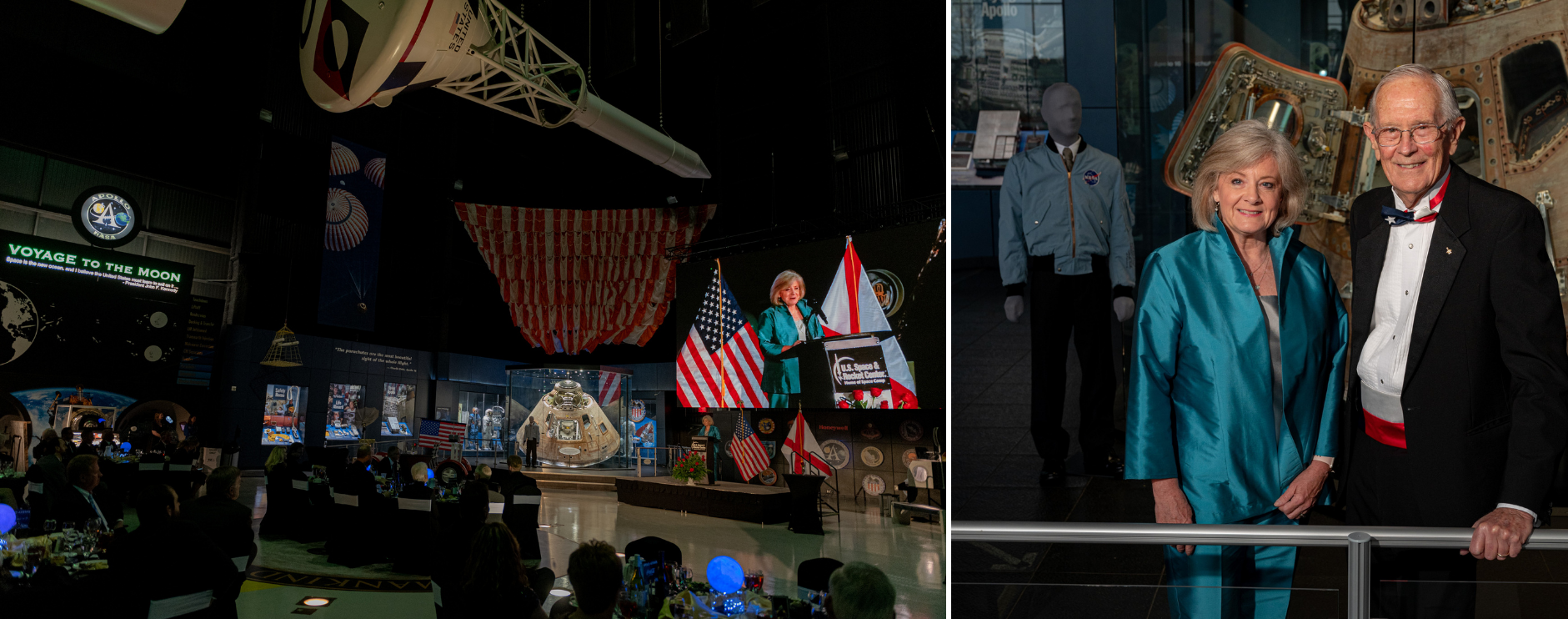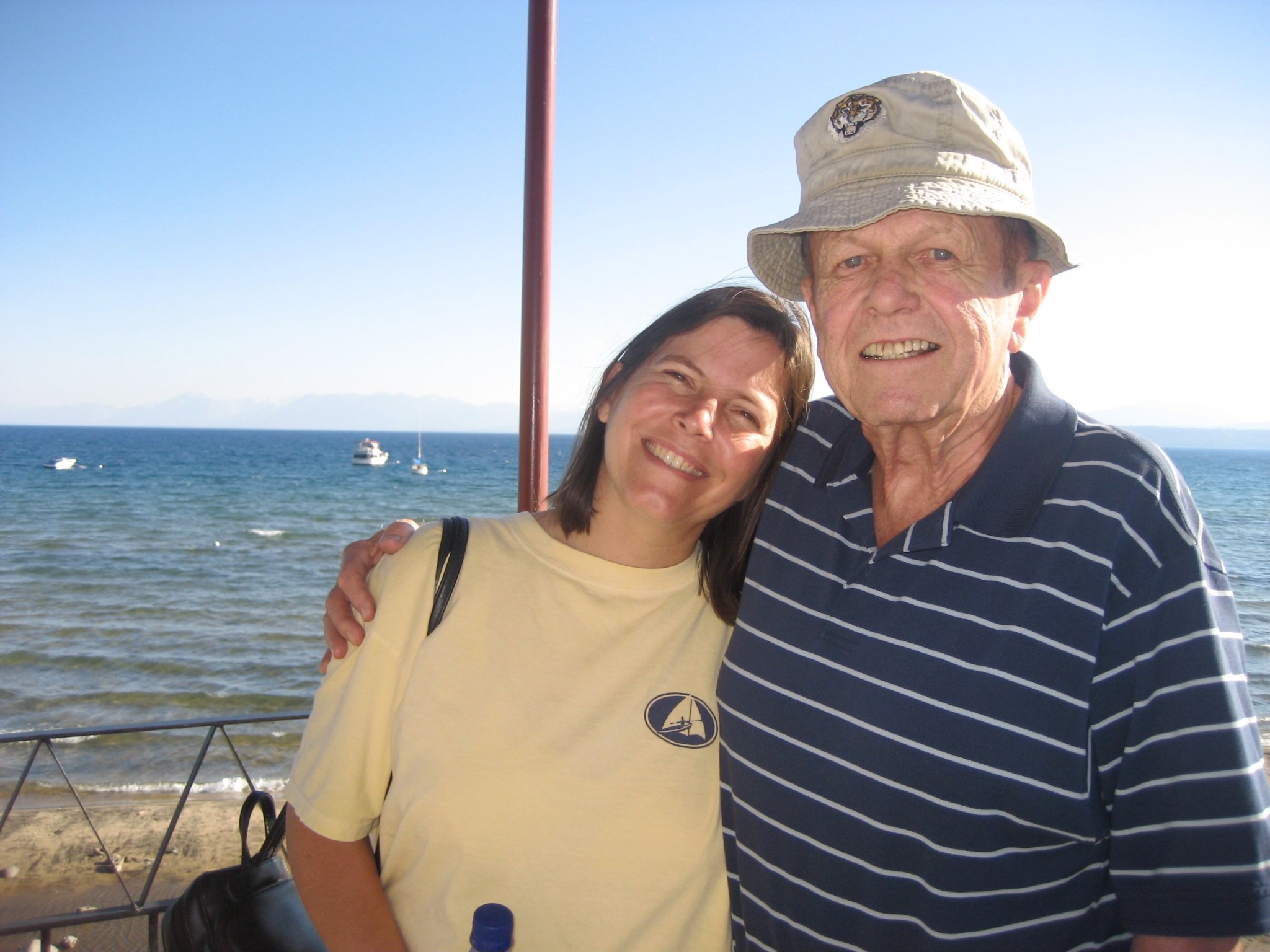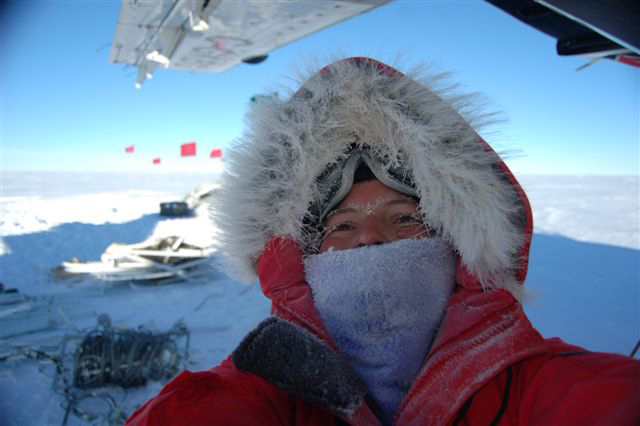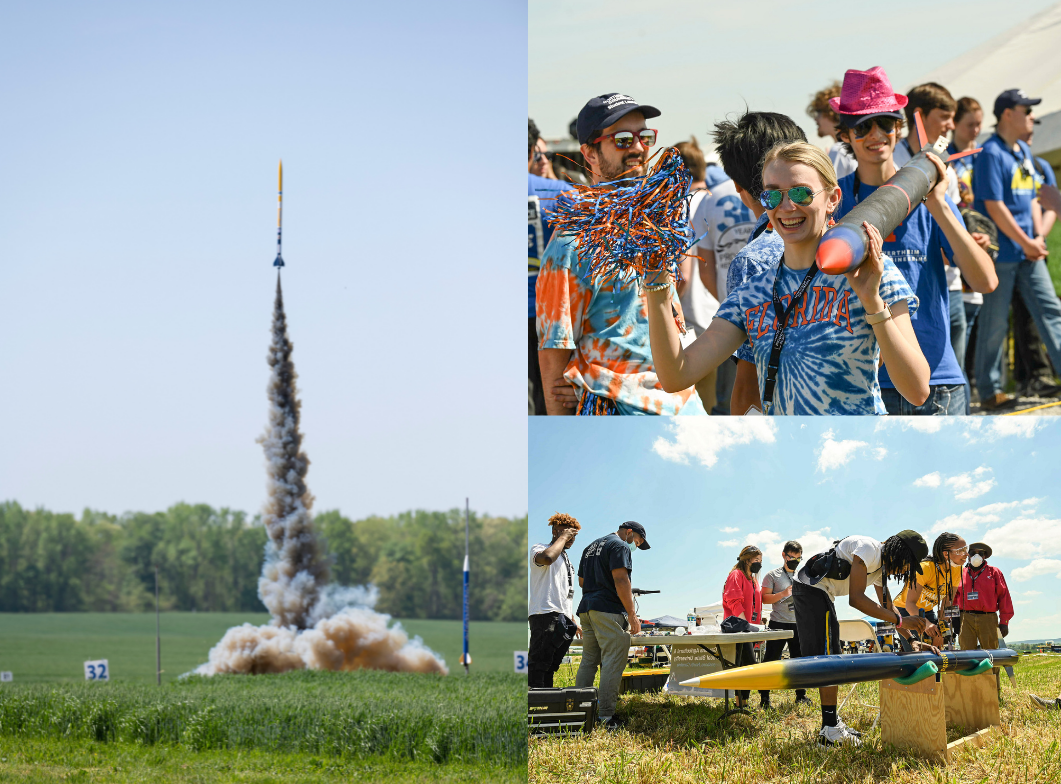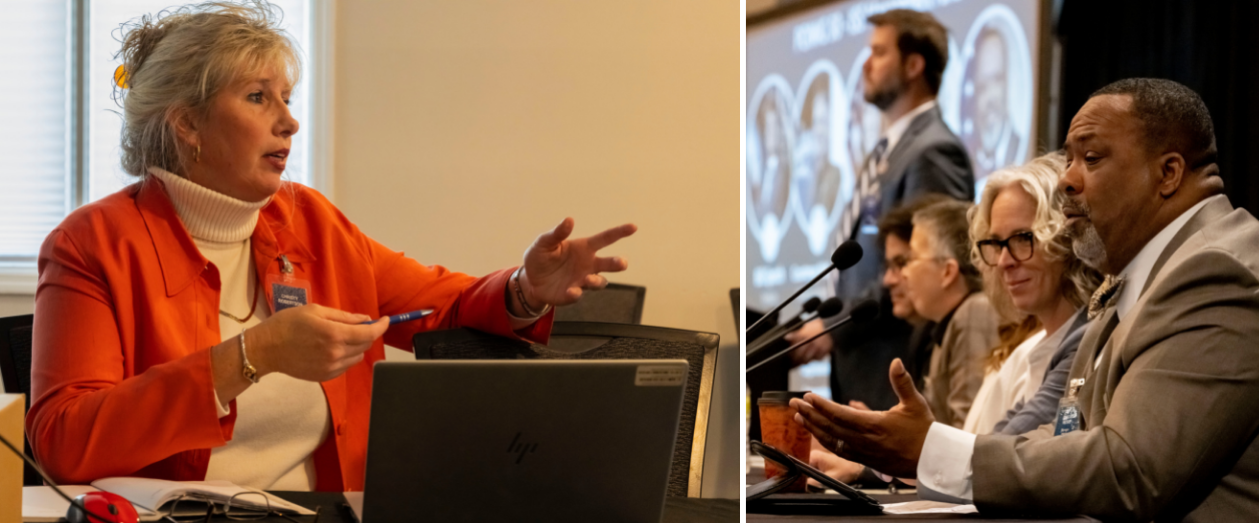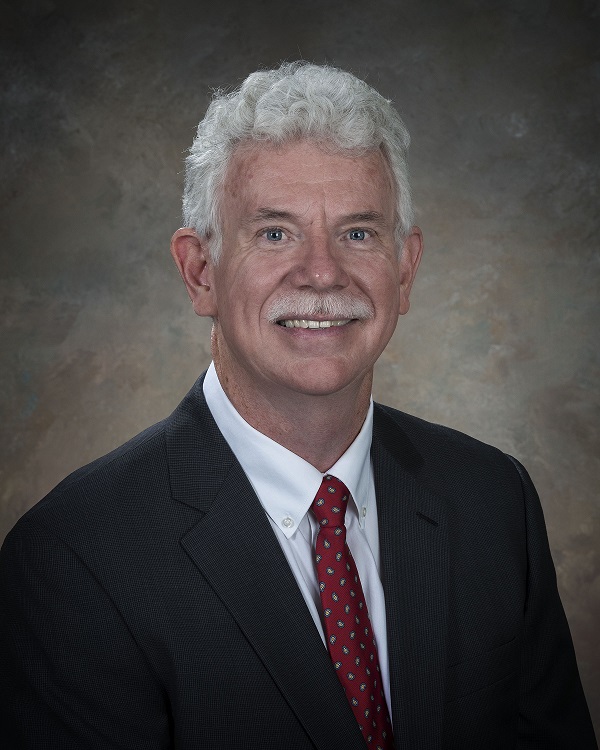I
Joseph Pelfrey Named Marshall Deputy Director
Joseph Pelfrey has been appointed deputy director of NASA’s Marshall Space Flight Center.
Pelfrey will assist in leading Marshall’s nearly 7,000 on-site and near-site civil service and contractor employees and oversee its annual budget of approximately $4 billion. He also will help guide Marshall’s broad portfolio of human spaceflight, science, and technology development efforts, which touches nearly every mission NASA pursues.
“It’s my pleasure to welcome to Marshall’s leadership team such a smart, caring, detail-oriented engineer and manager,” Marshall Director Jody Singer said. “I’ve been privileged to work with Joseph Pelfrey for many years, and he’s an inexhaustible source of insight and invention – both critical to executing NASA’s mission every time we fly and every day we come to work.”
Previously, Pelfrey was manager of Marshall’s Human Exploration Development & Operations Office from 2020-2022, overseeing management and implementation of Marshall’s work in the areas of human exploration and transportation projects; habitation systems, payload and mission operations and integration; and International Space Station payload, facility, and environmental control and life support systems project development and integration. He also was deputy manager of that organization from 2018-2020.
Throughout his NASA career, he has worked in multiple technical leadership positions. He joined Marshall in 2004 as an aerospace engineer in the Science and Mission Systems Office and went on to work in various leadership roles within the International Space Station Program, overseeing the development, integration, and operations of multiple payload facilities and science experiments.
In 2008, Pelfrey joined Marshall’s Engineering Directorate as the design integration lead for the Ares I Upper Stage, the rocket that would inform development of NASA’s Space Launch System. In 2011, he was named engineering task manager for the SLS Spacecraft/Payload Integration and Evolution Office and, subsequently, manager of the Commercial Orbital Transportation Services Project at Marshall.
In 2012, he was appointed deputy manager and then manager of the Exploration and Space Transportation Development Office in Marshall’s Flight Programs and Partnerships Office. In 2016, he was appointed to the Senior Executive Service post of associate director for operations in Marshall’s Engineering Directorate. The Senior Executive Service is the personnel system covering most top managerial, supervisory, and policy positions in the executive branch of the federal government.
A native of Cheraw, South Carolina, Pelfrey received a bachelor’s degree in aerospace engineering from Auburn University in 2000. He resides in Huntsville with his wife, Nicole, and daughter, Adelyn.
Artemis I Moon Rocket Moves to Vehicle Assembly Building
NASA’s Space Launch System (SLS) rocket and Orion spacecraft for the Artemis I mission roll back to the Vehicle Assembly Building at the agency’s Kennedy Space Center on April 26. SLS and Orion reached their destination at approximately 5 a.m. CDT after a 10-hour journey from Launch Pad 39B. In the coming weeks, teams will work on replacing a faulty upper stage check valve and a small leak within the tail service mast umbilical ground plate housing, and perform additional checkouts before returning to the launch pad for the next wet dress rehearsal attempt. (NASA/ Aubrey Gemignani)
Listening to Understand: Marshall Creates New Valued Voices Council
Dear Marshall family,
This is one of the most dynamic times in Marshall’s history. COVID-19, Future of Work initiatives, the transformation of NASA’s mission support services, and other elements present changes and challenges.
In such times, it is vital to ensure team members have a safe place where individual and collective ideas, feedback, and perspectives are received in a nonjudgmental setting. To foster an ever-increasingly positive, inclusive, and collaborative environment, Marshall is launching its Valued Voices Council.
The vision for creating the council was having a group focused on the culture, the people, and the work environment at Marshall, as we evolve and move into a different era of operating. We want to foster an environment and a culture that people want to work in, and where they all feel like they have an opportunity to be heard.
Part of that inclusivity is working with representatives from our employee resource groups and unions, and a newly established advisory board – the Marshall Cultural Advisory Committee – chaired by Paula Decesaris, deputy director of the Spacecraft and Vehicles Systems Department, and co-chaired by Bill Marks, deputy director of the Office of Center Operations. They will plan and execute monthly meetings to discuss topics that flow up from the employee resource groups or from anybody who wants to work through their management chain to bring things to the table. The Cultural Advisory Committee will then forward these matters to the Valued Voices Council for consideration and possibly further action.
The council consists of 17 members: Marshall’s deputy director, who serves as chairperson, the chairperson of the Culture Advisory Committee, and the deputy directors of the center’s 15 organizations. Marshall’s deputy director has the authority to determine if the council will take a matter to the center director as a recommendation of something they want to change – something that’s going to help in a positive, constructive way, and improve our culture.
The Valued Voices Council works hand in hand with Marshall’s Office of Diversity and Equal Opportunity, employee resource groups, and Bridge Champions. The council augments all the organizations and resources at the center to help bring new ideas to the surface and help get policies changed when needed.
We want everyone to feel their ideas matter and to fully participate. Really listening to everyone is where we get the best blend of ideas and thoughts and can truly harness the phenomenal brainpower of the Marshall team.
Building and preserving trust is a cornerstone of positive culture – trust between our team members, and trust with leadership. We succeed together, and we must be a team that is not afraid to engage, interact, and let their voices be heard. I urge you to speak up, contribute, and make Marshall the best we can be together.
Rick Burt
Special assistant to the center director
NASA Leaders Honor Apollo 16 Anniversary, Look Ahead to Artemis
Left: Jody Singer, director of NASA’s Marshall Space Flight Center, addresses the audience at the Apollo to Artemis Gala inside the U.S. Space & Rocket Center’s Davidson Center on April 20. The event honored the 50th anniversary of the Apollo 16 mission to the Moon, with Lunar Module Pilot Charlie Duke serving as special guest. Singer and keynote speaker Jim Free, NASA associate administrator for Exploration Systems Development, discussed the Artemis program and the upcoming Artemis I mission. “The Apollo missions represent one of humanity’s greatest achievements and Apollo 16 was no different,” Singer said. “They captured the world’s attention and inspired generations of great achievements, exploration, and scientific discovery. Now, we are using those achievements to take the next generation – the Artemis Generation – back to the Moon, and on to Mars.” Right: Singer and Duke. (U.S. Space & Rocket Center)
NASA, Partners Develop ‘Lunar Backpack’ Technology to Aid New Moon Explorers
By Rick Smith
Imagine a mountaineering expedition in a wholly uncharted environment, where the hikers had the ability to generate a real-time 3D map of the terrain. NASA researchers and their industry partners have developed a remote-sensing mapping system set to aid explorers in the most isolated wilderness imaginable: the airless wastes at the South Pole of the Moon.
The Kinematic Navigation and Cartography Knapsack (KNaCK) is a mobile lidar scanner – a remote sensing method that uses light detection and ranging laser light to measure range. Donned like a hiker’s backpack, it makes use of an innovative type of lidar called frequency modulated continuous wave lidar in order to provide Doppler velocity and range for millions of measurement points per second. These measurement points instantly create a real-time navigation system, delivering to the explorer a 3D “point cloud” or high-resolution map of the surrounding terrain.
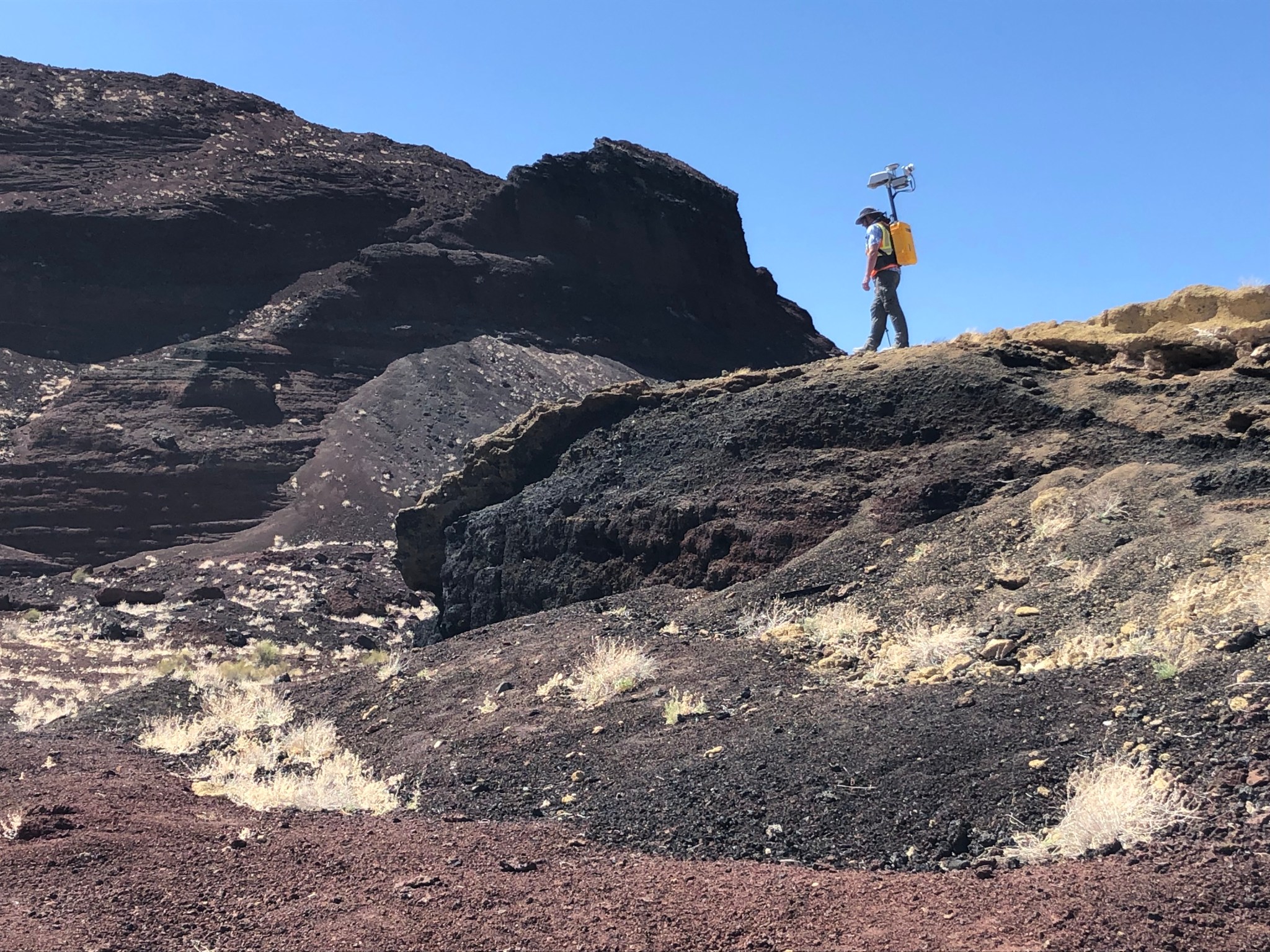
Think of it as a superpowered version of laser range finders used by surveyors or the highly sensitive proximity alarms that help smart cars avoid collisions, said planetary scientist Dr. Michael Zanetti, who leads the KNaCK project at NASA’s Marshall Space Flight Center.
“Basically, the sensor is a surveying tool for both navigation and science mapping, able to create ultra-high-resolution 3D maps at centimeter-level precision and give them a rich scientific context,” Zanetti said. “It also will help ensure the safety of astronauts and rover vehicles in a GPS-denied environment, such as the Moon, identifying actual distances to far-off landmarks and showing explorers in real time how far they’ve come and how far is left to go to reach their destination.”
That’s a key challenge as Artemis-era explorers prepare to undertake the first modern missions to the Moon, and the first ever to its South Pole. The Sun never rises more than 3 degrees above the lunar horizon there, leaving much of the terrain in deep shadow. That makes distances to various points of interest difficult to eyeball.
Initiated in 2020 with funding by NASA’s Early Career Initiative, the KNaCK project has partnered with Torch Technologies Inc. of Huntsville to develop the backpack prototype and associated navigation algorithms that permit accurate mapping without GPS. The project’s commercial vendor, Aeva Inc. of Mountain View, California, is supplying frequency modulated continuous wave-lidar sensors and support, working with NASA to enhance the backpack’s lidar sensing system for use on the Moon and other extraplanetary human excursions.
Using KNaCK during rover excursions and when traveling on foot, explorers could precisely map the topography of the landscape, including deep ravines, mountains, and caves. Lidar even works in pitch blackness, relieving astronauts of the need to haul cumbersome lighting rigs everywhere they go.
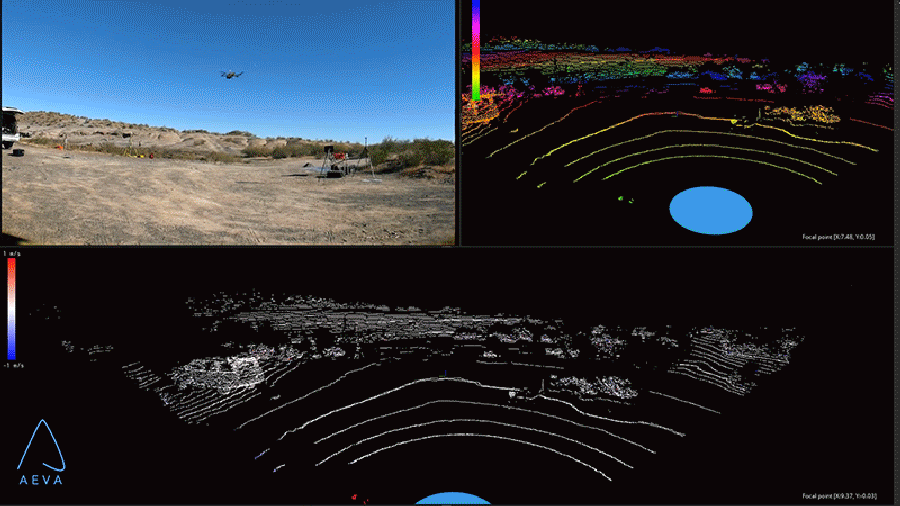
“As human beings, we tend to orient ourselves based on landmarks – a specific building, a grove of trees,” Zanetti said. “Those things don’t exist on the Moon. KNaCK will continuously enable explorers traversing the surface to determine their movement, direction, and orientation to distant peaks or to their base of operations. They can even mark specific sites where they found some unique mineral or rock formation, so others can easily return for further study.”
That’s vital for astronauts on a clock, their excursions limited by the oxygen supply in their suits. KNaCK’s ultra-high-resolution precision – an order of magnitude greater than conventional lunar topography maps and elevation models – makes it a vital resource for conducting science and mission operations 238,900 miles away from mission control, Zanetti said.
The hardware will get another major field test in late April at NASA’s Solar System Exploration Research Virtual Institute in Kilbourne Hole, New Mexico. The team previously put the KNaCK system through its paces at that ancient volcanic crater – estimated to be 25,000-80,000 years old – in November 2021. They also used it recently to conduct a 3D reconstruction of the 6-mile-long sea barrier dunes at NASA’s Kennedy Space Center, which protect its primary rocket launch pads. Kennedy and Marshall engineers will continue to use KNaCK to assess the impact of storms on dune erosion, ensuring the safety of future flight missions as they further refine the system.
Next, the KNaCK team will work to miniaturize the hardware – the backpack prototype weighs about 40 pounds – and harden the sensitive electronics against the punishing effects of microgravity and solar radiation.
“Taking advantage of the latest advancements in lidar technology from Aeva, our next-generation space-hardened unit with support from Torch Technologies will be about the size of a soda can and could enable lunar surface operations like never before,” Zanetti said. He envisions mounting it on a rover or on the side of an astronaut’s helmet – which should leave plenty of room in future lunar mountaineers’ all-purpose backpacks.
Smith, a Manufacturing Technical Solutions employee, supports Marshall’s Office of Strategic Analysis & Communications.
Take 5 with Tia Ferguson
By Daniel Boyette
A kind act at a swimming pool as a youth left a lasting mark on Tia Ferguson, director of the Space Systems Department at NASA’s Marshall Space Flight Center. Ferguson was 7 when Blase Gaudé, who was about six years older, taught her how to swim the butterfly stroke.
“By learning a new stroke, I began to love learning at a very early age,” she said. “Continuously honing my strokes, I learned the value of hard work and persistence. Thanks to his help, I started winning the competitions and a year later won state.”
Gaudé suffered a spinal cord injury during a football game his senior year of high school that left him paralyzed in all four limbs. He persevered, earned degrees in computer science and computer engineering, and worked for Sandia National Laboratories.
“Blase continued to mentor me throughout my career,” Ferguson said. “I learned so much from his perseverance, his struggles to do everyday activities, his incredible insight and leadership, and his positive outlook on his life and the world. I would definitely not be the person I am today without him as a mentor and role model. My passions to mentor, to continually learn, and to ensure inclusion and diversity sparked from my interactions with Blase.”
Question: What are your primary responsibilities as director of the Space Systems Department?
Ferguson: I believe my primary responsibility is leading the incredibly talented people in the department. I firmly believe that if we take care of our people and help them succeed in their goals, then mission success will always follow. My goal is to help our team understand how the current environment at NASA is changing and to help shape the workforce to meet NASA’s future needs. Creating new partnerships, exploring new technologies needed for the future, and developing flexible skillsets are among the many goals to shape our future. The Space Systems Department has had a broad range of successes in our support of three NASA mission directorates, including the most recent delivery of Environmental Control and Life Support System development hardware to demonstrate technologies on the International Space Station in preparations of future Moon and Mars missions. We successfully delivered hardware for the IXPE telescope that will enable new discoveries in our universe, we delivered the NEA Scout hardware that will continue to develop solar sail technology, and we are in the middle of delivering the in-house-built flight software for the Space Launch System vehicle. The amount of hardware and testing required for this important SLS software delivery is truly amazing. I am humbled and inspired to be part of such an incredible team of people that lead these efforts and many more.
Question: What excites you most about the future of space exploration?
Ferguson: I am so passionate about being part of the Artemis program that will bring humans back to the Moon and eventually to Mars. We are in the middle of creating the expansion of humankind – how cool is that? I am equally excited about delivering new science instruments and technologies that help us explore our universe. Developing partnerships to create the new space “econosphere” is incredibly rewarding. There are so many things to be discovered, and I know the work we are doing right now will create incredible advances that will help space exploration and will also enable technology transfer to help solve Earth-bound problems as a result. As we pursue our goals in space, my favorite part of this job is mentoring future leaders and inspiring the next generation of leaders in science, technology, engineering, and math.
Question: Growing up, what led to your interest in engineering? At what point did you become interested in working at NASA?
Ferguson: In school, I excelled in math and science and I always wanted to figure out how things worked. I always enjoyed all of my brother’s toys, like Legos and building blocks, and to this day I enjoy working puzzles. From these interests, I knew I wanted a technical job. My dad was a civil engineer, and he encouraged me to consider it as a career. Although I started in civil engineering at Tulane University, our first freshman “Introduction to Engineering” class had industry leaders speak to our class about the different types of engineering. On the day the mechanical engineer came in and talked about how he invented the shrimp-peeling machine, I was hooked. I wanted to create unique designs to solve people’s problems. It was shortly after that when the Challenger accident happened. This brought attention to how difficult space flight is, and all of the tough problems that NASA faced to launch people into orbit. This is what sparked my interest in NASA. I applied my senior year and started working at Kennedy Space Center in 1990.
Question: What is the most interesting project and experience that you’ve been a part of during your time at NASA?
Ferguson: My favorite and most interesting project has to be SERVIR, because they are doing such amazing things that are making such a positive impact around the world.
The most interesting experience I’ve had on a project has to be the Advanced Thin Ionization Calorimeter (ATIC) project that took me to the South Pole in Antarctica. I was on the recovery team, so we didn’t arrive in Antarctica until January 2008, which was after the December balloon launch from McMurdo Station. I was in Antarctica for a month preparing for and eventually recovering the gondola. We did snow survival training, including overnight camping, in case we were stranded on the ice during the recovery. Balloon gondolas drift freely around the continent, so there is not a lot of control on where they will land. The ATIC balloon ended up landing 200 miles from the South Pole, so we luckily were able to spend a week at the South Pole Station. I flew on a C-130 from McMurdo to the South Pole, and there were only four of us on the plane with the pilot and co-pilot, and the scenery of untouched winter mountains was inspiring. At the South Pole, we were housed in tents and walked to the South Pole Station for meals and to work. My most memorable experience was the 200-mile flight in a Twin Otter plane to recover the gondola. We worked outside all day in minus 40-degree Fahrenheit temperature with a windchill of minus 70, and I honestly was never cold. It was truly a once-in-a-lifetime experience, although I would do it again in a heartbeat!
I also enjoyed seeing penguins, seals, and whales along the shore in McMurdo.
Question: Who is your biggest inspiration?
Ferguson: I have had many mentors, teachers, coaches, and bosses who inspired me in many different ways. I have to say my biggest inspiration is my father, Charles Hayden Kaiser Jr. He served in the military during World War II and the Korean War, and then started a civil engineering company where he worked for 64 years. He was truly a servant leader in that he always aspired to do the right thing and to care for people. He cared deeply about his employees, his family, and his community. He would always make rounds to visit people he knew in the hospital, and elderly around our small town of Natchez, Mississippi, and he served as a volunteer on many boards. I strive to become the best leader I can be and feel so fortunate to have had him as a role model in my life.
Boyette, an LSINC employee and the Marshall Star editor, supports Marshall’s Office of Strategic Analysis & Communications.
Student Rockets Return to Alabama Sky
Following two years of virtual events, high school and college teams from across the country return to Bragg Farms in Toney, Alabama, to compete in NASA’s Student Launch rocketry competition April 23. Left: A rocket takes to the sky. Top right: The team from the University of Florida in Gainesville carries their rocket to the launch site; bottom right: Team members from North Carolina Agricultural and Technical State University in Greensboro make adjustments. Learn more about launch day here. Winners will be announced during a live virtual ceremony June 2. (NASA/Charles Beason, Danielle Burleson)
Marshall Hosts Scientists, Researchers to Discuss Space Station Science
Christy Robertson, left, a payload operations director at NASA’s Marshall Space Flight Center, and Dwight Mosby, right, manager of the Payload and Mission Operations Division at Marshall, speak at the biannual Payload Operations Integration Working Group meeting April 19 at the Huntsville Botanical Garden. The event offered payload developers, investigators, and International Space Station Program personnel the opportunity to coordinate processes and schedules and to review the status of scientific payloads currently on or soon launching to the station. The in-person and virtual meetings drew a combined attendance of 754, which included international partners and industry professionals. The Payload Operations Integration Center at Marshall is mission control for science on the space station. (NASA/Mick Speer)
Adjusting to an On-site Return: A Message from Employee Assistance Program Coordinator Terry Sterry
Dear Marshall family,
As I drove onto Redstone Arsenal earlier this month, I admit that it felt a little strange. I had been to my on-site office several times over the past two years, but not during the morning rush hour. When I got to the office, I was very happy to see and talk with friends who I had hardly seen, if at all, since March 2020.
I unpacked my computer, set everything up, and sat down to get to work. It was at that point that I noticed a palpable degree of what we in the mental health field call “cognitive dissonance.” One part of me felt right at home – or right at work, if you will – but another part of me felt a little uncertain and out of place. It wasn’t an intense feeling, like we might have when beginning a new job, just a sense that something was little off. I had looked forward to returning to the office part-time, and I knew that things would be different, but I didn’t know exactly how it would feel.
I’m not saying that your experience will be like mine, but I do believe that for many returning to on-site work, it will take a little time for things to feel as natural and comfortable as they did before the pandemic. When the pandemic hit, we all made a multitude of adjustments out of necessity, and we eventually settled into a new routine. For many, that routine is now changing again, and change is disruptive. This may be particularly true for anyone who preferred to continue working remotely.
Returning to on-site work may also lead to significant levels of stress and/or anxiety, even among those who are looking forward to it. My point is that different people will have different thoughts and feelings about, and reactions to, returning on-site. We cannot expect that others will think or feel the same way that we do, because each of us has unique personal circumstances and a unique history. This is a good time for all of us to be a little extra patient with ourselves and others, and to show a little extra grace when things don’t go as well or as quickly as we had hoped.
If you don’t yet know what your work situation will be going forward, talk with your supervisor to develop a plan. NASA will exit the COVID-19 Response Framework on May 15, so now is the time to be making those decisions.
Also, a reminder that April is Alcohol Awareness Month. While many people enjoy alcoholic beverages safely, alcohol abuse or misuse is dangerous and can destroy lives, relationships, and/or careers. It’s estimated that 14.1 million American adults suffer from an alcohol use disorder. Approximately 7.5 million children age 17 or younger live in households with at least one parent who has an alcohol use disorder. An estimated 95,000 people die from alcohol-related causes annually, including about 10,500 deaths from automobile accidents – 29% of all driving fatalities. People who choose to drink are encouraged to do so in moderation, which is defined by the U.S. Department of Agriculture dietary guidelines as up to one standard drink per day for women or up to two standard drinks per day for men. It’s always good to know what we’re consuming, so always check the label because different drinks have different levels of alcohol content.
If you or someone you know is struggling with alcohol abuse or addiction, keep in mind that no one expects or wants to develop a drinking problem. Having an addiction is not a sign of weakness. Addiction is a very complex disorder, resulting from changes in the way the brain functions. Overcoming an addiction is not simply a matter of willpower or strength of character, but effective treatments are available. If you’re concerned about your drinking, or just curious, you can take a confidential self-test here. If you or someone you know is ready to stop drinking but finding it difficult to do so, reach out to Marshall’s Employee Assistance Program or another counselor of your choosing, your physician, or a pastor or other spiritual leader, for professional assistance.
Please keep in mind that the Employee Assistance Program is available to assist you with matters related to well-being. This is true for supervisors and managers, just as it is for everyone else. Contact me directly at terry.w.sterry@nasa.gov or 256-544-7549 to arrange for a meeting.
Be safe and well,
Dr. Terry Sterry
Licensed psychologist and Marshall Employee Assistance Program coordinator
For more information, visit the Employee Assistance Program page on Inside Marshall.


























